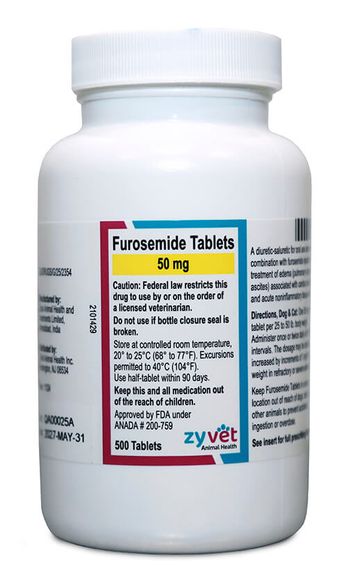
One more fright, one less heartbeat
This cardiologist wants to prove that the intense effects of the fight-or-flight "sympathetic storm" in pets from scary veterinary visits can wear out their hearts before their time.
Each of us, including our pets and clients, are endowed at birth with a certain finite number of heartbeats. Any time stress makes our hearts charge hard, it's stealing from that number. (Shutterstock.com)The feelings are familiar to anyone who has ever been caught in the crosshairs of danger: Palms bleed sweat. Muscles twitch. Heart rate soars. If the danger is real, this fight-or-flight reaction may save your life.
If this is just another stress-induced false alarm, however, the experience known as the “sympathetic storm” may actually be stealing valuable heartbeats from your life.
The human animal isn't the only animal hard-wired for flight or fight. What happens when those storm clouds come rolling toward the Chihuahua on your exam table?
That's what Professor Emeritus Robert Hamlin, DVM, PhD, DACVIM, wants to know. As one of the world's premier cardiology researchers, Dr. Hamlin has spent his career studying the heartbeats of animals . He arrived at The Ohio State University in 1958, and he's still there today, teaching, practicing in the clinic and researching. In what he calls his last research phase, fight-or-flight heartbeats have become his compelling interest.
A finite number of heartbeats
Start with this widely accepted idea, he says: Each of us, including our pets and clients, are endowed at birth with a certain finite number of heartbeats. Any time stress makes our hearts charge hard, it's stealing from that number. Anything that unnecessarily triggers the sympathetic storm-a veterinarian approaching a dog with a rectal thermometer, for instance-contributes, he thinks, to both morbidity and mortality.
If the research supports this theorem, the implications for veterinary practice could be revolutionary. This is Dr. Hamlin's research mission.
Fear Free is healthier for the animal ... and happier for you.“If we can show through these studies that stress leads to both morbidity and mortality, then from a scientific perspective, the profession will know the importance of reducing stress in a pet's life, or, to whatever extent is possible, in the life of a service dog,” Dr. Hamlin says. “Of course, we sense it now, and we have a good deal of evidence. But knowing scientifically will bolster the notion of removing as much stress as possible from situations where stress is unavoidable, like the clinic or hospital visit.”
The damage of a sympathetic storm
Dr. Hamlin thinks the evidence that stress during a sympathetic storm is injurious to the cardiovascular system is clear:
“One of the most serious situations for the heart is when it suffers an oxygen debt, when it consumes more oxygen than is delivered to it by the coronary circulation. This creates an energetic imbalance that may result in reduced force of contraction. So, the heart pumps less blood, stiffens and does not fill well, which creates a disturbance in rhythm that may result in sudden death.
“When the heart rate speeds, then it consumes more oxygen, it spends less time relaxed. And because most oxygen is delivered when the heart is relaxed, the increase in heart rate aggravates energetic imbalance by increasing oxygen demands and decreasing oxygen delivery-a double whammy! Heart rate is accelerated during a sympathetic storm, manifested by elevated circulating adrenalin and by increased stimulation of cardiac acceleratory nerves. Not only does this result in energetic imbalance, but the storm is also deleterious because it increases oxygen demand by increasing contractility and hindrance to ejection-a quadruple whammy!”
If stress for both the human animal and the animals they love is an enemy of the healthy heart, it makes sense, Dr. Hamlin says, to eliminate as much unnecessary stress as possible.
“When it comes on in a sustained manner, I don't think it does anybody any good,” he says. “If we love our animals, why would we put them in a situation that produces stress and increases morbidity and mortality? Can I quantify it yet? I cannot. This question can only be answered by a long-term epidemiological study, which has not yet been commissioned."
When the storm is in your practice
Stressful clinic visits create a second serious problem, he contends. Think of it as white-coat syndrome for animals. Just as physicians have learned to factor exam room stress into their human data, veterinarians who don't may be making unrealistic diagnoses from exam table data.
“You're going to get an elevated heart rate that's going to affect the animal and give you a wrong impression about the state of the animal,” he says.
Stress in the clinic does two things, he argues: "It injures the animal, and it gives you a false impression of what the physiological state is.”
Dr. Hamlin's current study, which is being conducted by a former student of his in Brazil, seeks to measure the heart rates of animals at home when they aren't stressed, in the hospital cage and on the exam table.
“So far,” he says, “we've seen that when they're on the exam table, their heart rates are significantly higher. So, if our mission is to improve the duration and quality of life of our patients, I think we've got to modify our veterinary hospitals and modify our approach to practice.”
That means, he says, doing everything possible to calm the sympathetic storm before its dramatic physiological effects are unleashed.
“The only time a sympathetic storm is good for you,” Dr. Hamlin says, “is to fight or flee.”
John Lofflin is a journalism professor and freelance writer based in Parkville, Missouri.
Newsletter
From exam room tips to practice management insights, get trusted veterinary news delivered straight to your inbox—subscribe to dvm360.






